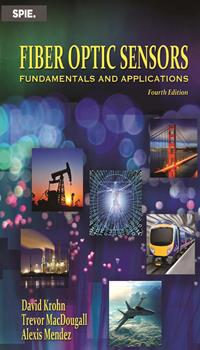Micro-structured and Specialty Optical Fibres VII
19 April 2021 | Online Only, Czech Republic
Fiber Optic Sensors and Applications XVII
12 April 2021 | Online Only, Florida, United States
Optical Waveguide and Laser Sensors
27 April 2020 | Online Only, California, United States
Fiber Optic Sensors and Applications XVI
16 April 2019 | Baltimore, MD, United States
Micro-structured and Specialty Optical Fibres
3 April 2019 | Prague, Czech Republic
Micro-Structured and Specialty Optical Fibres
25 April 2018 | Strasbourg, France
Optical Sensing and Detection
23 April 2018 | Strasbourg, France
Fiber Optic Sensors and Applications XV
17 April 2018 | Orlando, FL, United States
Fifth Workshop on Specialty Optical Fibers and Their Applications
11 October 2017 | Limassol, Cyprus
Micro-structured and Specialty Optical Fibres
26 April 2017 | Prague, Czech Republic
Fiber Optic Sensors and Applications XIV
11 April 2017 | Anaheim, CA, United States
Fiber Optic Sensors and Applications XIII
18 April 2016 | Baltimore, MD, United States
Micro-Structured and Specialty Optical Fibres
4 April 2016 | Brussels, Belgium
Optical Sensing and Detection
3 April 2016 | Brussels, Belgium
Fiber Optic Sensors and Applications XII
22 April 2015 | Baltimore, MD, United States
Micro-structured and Specialty Optical Fibres
15 April 2015 | Prague, Czech Republic
Smart Sensor Phenomena, Technology, Networks, and Systems Integration VIII
9 March 2015 | San Diego, California, United States
Fiber Optic Sensors and Applications XI
8 May 2014 | Baltimore, MD, United States
Optical Sensing and Detection
14 April 2014 | Brussels, Belgium
Micro-Structured and Specialty Optical Fibres
14 April 2014 | Brussels, Belgium
Smart Sensor Phenomena, Technology, Networks, and Systems Integration VII
10 March 2014 | San Diego, California, United States
Fiber Optic Sensors and Applications X
2 May 2013 | Baltimore, Maryland, United States
Micro-structured and Specialty Optical Fibres II
15 April 2013 | Prague, Czech Republic
Smart Sensor Phenomena, Technology, Networks, and Systems Integration VI
10 March 2013 | San Diego, California, United States
Fiber Optic Sensors and Applications IX
26 April 2012 | Baltimore, Maryland, United States
Micro-structured and Specialty Optical Fibres
17 April 2012 | Brussels, Belgium
Optical Sensing and Detection
16 April 2012 | Brussels, Belgium
Smart Sensor Phenomena, Technology, Networks, and Systems Integration V
12 March 2012 | San Diego, California, United States
Fiber Optic Sensors and Applications VIII
28 April 2011 | Orlando, Florida, United States
Smart Sensor Phenomena, Technology, Networks, and Systems IV
7 March 2011 | San Diego, California, United States
Advanced Sensor Systems and Applications IV
18 October 2010 | Beijing, China
Workshop on Specialty Optical Fibers and Their Applications (WSOF-10)
13 October 2010 | Oaxaca, Mexico
Optical Sensing and Detection
12 April 2010 | Brussels, Belgium
Fiber Optic Sensors and Applications VII
7 April 2010 | Orlando, Florida, United States
Smart Sensor Phenomena, Technology, Networks, and Systems III
8 March 2010 | San Diego, California, United States
Fiber Optic Sensors and Applications VI
15 April 2009 | Orlando, Florida, United States
Smart Sensor Phenomena, Technology, Networks, and Systems II
9 March 2009 | San Diego, California, United States
19th International Conference on Optical Fibre Sensors
14 April 2008 | Perth, Australia
Optical Sensors
7 April 2008 | Strasbourg, France
Smart Sensor Phenomena, Technology, Networks, and Systems
10 March 2008 | San Diego, California, United States
Fiber Optic Sensors and Applications V
10 September 2007 | Boston, MA, United States
Sensor Systems and Networks: Phenomena, Technology and Applications for NDE and Health Monitoring
19 March 2007 | San Diego, California, United States
Photonic Sensing Technologies
2 October 2006 | Boston, Massachusetts, United States
Smart Sensor Monitoring Systems and Applications
27 February 2006 | San Diego, California, United States
Fiber Optic Sensor Technology and Applications IV
25 October 2005 | Boston, MA, United States
Fiber Optic Sensor Technology and Applications III
26 October 2004 | Philadelphia, Pennsylvania, United States
Distributed and Multiplexed Fiber Optic Sensors VII
5 November 1998 | Boston, MA, United States



